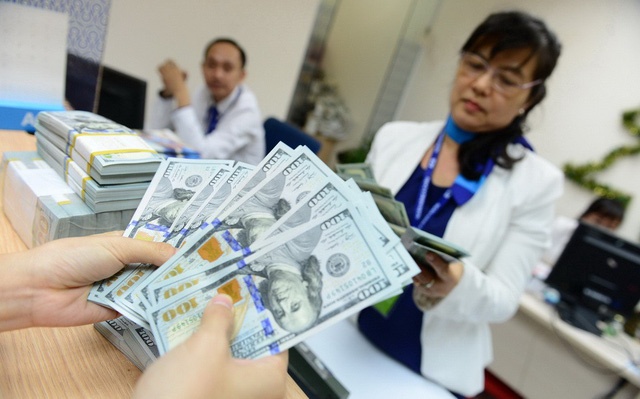After being relatively stable last year, the foreign exchange rate of the Vietnamese dong against the US dollar is forecast to be under bigger pressure due to both internal and external headwinds.

After being relatively stable last year, the foreign exchange rate of the Vietnamese dong against the US dollar is forecast to be under greater pressure in 2020 due to both internal and external headwinds.
Finance expert Nguyen Tri Hieu told Viet Nam News that pressure on the exchange rate would be bigger this year as a greenback supply decline in the domestic market is forecast, driven by weaker foreign direct investment (FDI) inflows and exports.
“Due to a decline in global demand, Viet Nam's exports in 2020 may not be positive as last year and the Government even forecasts a trade deficit of about 3 per cent of export turnover this year,” Hieu said, adding that Viet Nam’s imports are also likely to rise over the coming months, outpacing exports and putting pressure on the dong.
“Besides, it is projected that FDI and remittance inflow to Viet Nam would also weaken in 2020 due to the global economic slowdown, providing less support to the dong,” Hieu added.
Viet Nam received US$38 billion in total registered investment capital last year, up 7 per cent from $35.5 billion in 2018. The processing and manufacturing sector continued to attract the bulk of FDI at $24.6 billion, which accounted for 64.6 per cent of investment capital in 2019.
However, it is forecast that infrastructure and human capital bottlenecks will see FDI to the manufacturing and processing sector ease this year.
Higher inflation would also put more pressure on the exchange rate, Hieu said.
In fact, a shortage of meat in the country has seen inflation spike. Inflation was at 5.2 per cent year-on-year in December 2019, up from 3.5 per cent year-on-year in November 2019, led by a 9.2 per cent year-on-year inflation in food prices, up from 5.6 per cent year-on-year over the same period. This is likely to see Viet Nam ramp up imports of meat to deal with the shortfall, causing higher inflation in the coming months.
As for external headwinds, according to Hieu, though the US and China this month signed a first phase trade agreement, there are still a lot of disagreements between the two sides.
Moreover, as US President Donald Trump wants to use the trade war to gain an advantage over his opponent in his re-election campaign, the war cannot end in 2020, Hieu said, adding this would continue to have a strong impact on US dollar and Chinese yuan in 2020, putting pressure on the dong.
“The impacts will cause the dong to depreciate by between 2 and 3 per cent in 2020,” Hieu forecast.
The dong remained relatively stable against the dollar last year, with the SBV’s reference exchange rate up some 1.45 per cent against the end of the previous year.
Limited weakening
Despite being under more pressure, experts also forecast the Vietnamese central bank would try to limit the depreciation of the dong as the country is still stuck on the US’s currency manipulator watchlist.
According to analysts from Fitch Solutions, a strong foreign reserves position should allow the central bank to safeguard the currency against excessive downside volatility to avoid potential punitive measures from the US due to currency manipulation.
“That said, we believe that the State Bank of Viet Nam (SBV) will seek to limit the pace of dong weakening as Viet Nam remains on the US Treasury’s currency manipulator watchlist at its January 2020 report,” Fitch analysts told Viet Nam News, adding though they viewed the US taking punitive measures against Viet Nam as a quite unlikely scenario.
The analysts explained Viet Nam was included on the list as its goods trade surplus with the US continued to rise significantly, with the surplus reaching $47 billion over the four quarters through June 2019.
“However, its current account surplus narrowed to 1.7 per cent of GDP, and while Viet Nam frequently intervenes in the foreign exchange market to maintain a close link to the US dollar, intervention was done both ways. Net purchases of foreign exchange was also only at 0.8 per cent of GDP in the four quarters to June 2019.”
The US Treasury adds a country to its currency manipulator watchlist if it meets two of three criteria: trade surplus with the US of at least $20 billion, current account surplus of at least 2 per cent of GDP and persistent, one-sided intervention in the currency equivalent to 2 per cent of GDP in six months of a year.
Fitch analysts forecast the dong to average just slightly weaker by about 1 per cent and to average VND23,475 per US dollar in 2020.
As for long-term outlook, the dong would gradually depreciate against the US dollar due to its overvaluation and Viet Nam’s higher inflation vis-a-vis the US to average VND23,650 per dollar in 2021, they predicted. — VNS





